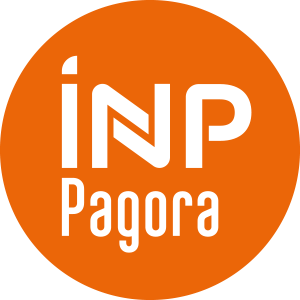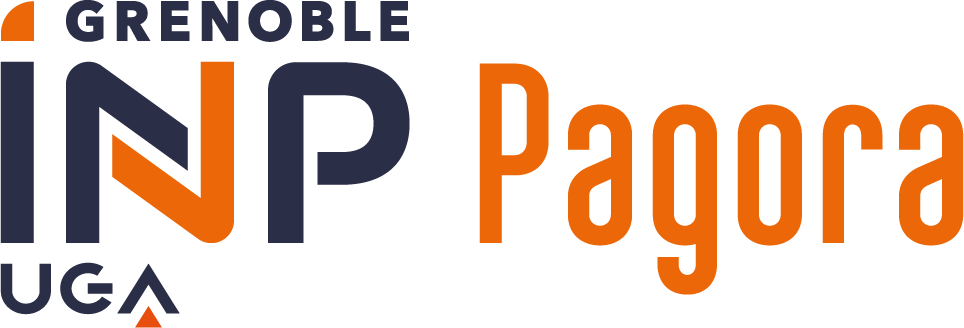Number of hours
- Lectures -
- Projects -
- Tutorials -
- Internship -
- Laboratory works -
ECTS
ECTS 30.0
Goal(s)
Learning outcomes :
- To take ownership of the plant's processes by focusing on control parameters, regulations, monitoring
- To work with industrial data, knowing how to navigate through the complexity of processes
- To develop its own "process" expertise
- To present the process to an audience
Frederic MUNOZ
Content(s)
- In the company: the apprentices collect the information (plans, field data): 1 to 2 days
- In Pagora: they write their files. 2 days
The theme to be dealt with is imposed by the teacher on all students, but arrangements will be made according to the context of the company, the facilities available, etc.... Each apprentice course is unique!
Formalization in the form of a slide show
Tips for transparencies:
- the simplified schemes are very educational and will be promoted
- hand and scanned diagrams are accepted as long as they are legible
- photos, screenshots, diagrams,... without captions or explanations have no value and will be penalized
Work and formalization plan:
I-Case Stationery
study of dough preparation (all or part of it depending on the type of business and context)
1 - Context: reminder of the elements necessary to understand the case
(scope of the study, product, key figures, indicators)
a maximum transparency
example: we manufacture papers with barrier properties and we will present the refining chain: indeed it is the refining that develops these properties. The operation is therefore strategic to serve the customer
2 - Schematic diagram of operations and main flows
Simplified diagram, Block diagram possible
max. three transparencies
3 - simplified summary of the main unit operations (role / resources used / key parameters / significant values)
max. three transparencies
example: Dilution operation.
Role: to get a good performance
Means: white water and dilution pump
Key parameters: thick paste concentration and white water concentration. Pump rotation speed because they determine the flow rates used
pulp: 4%, flow rate 15 m3/h
EB: 0.5%, flow rate 34 m3/h
diluted paste at the outlet:...
4 - description of 2 control loops.
what is being regulated / why ? / where does the setpoint come from? its value? / description-diagram / which sensors? / which actuators? / operation and control in practice / values representative of the parameters under control
Manual" regulations are accepted
max. four transparencies
example: level control
- what: we regulate the level by playing on the output of the vat room
- why: to avoid overflow
- setpoint: the setpoint is set by the operator
- value: 80% of the vat room level
- sensor: pressure sensor at the base of the vat room. A calculation converts the value into a level measurement
- actuator: output valve
- operation: when the level approaches 80%, the valve opens gradually (and vice versa). Regulation is activated from 70% onwards
- values: on the day of the visit, the level was 85% and the valve was 100% open
5 - literal writing of simplified balances (e.g. material balance, water balance, energy balance)
make a black box by specifying the inputs and outputs
if an approximate costing is possible, it is welcome, with what closure rate? what are the key indicators?
max. three transparencies
example :
dry water balance
Water" inputs: water from the paper inlet + water in the ventilation air and the air drawn in by the hood
Water" outlets: water from the paper outlet + water in the fumes
6- example of a typical maintenance operation on this workshop (type of maintenance, means of implementation, duration, possibly cost)
a maximum transparency
II-Case Other type of business
Consult the Course Lead for adaptation of the subject
Overall, we will follow the architecture proposed above
Description of a part of the company's or machine's process, operation and key parameters
Unless otherwise specified by the factory, support is provided in the presence of other apprentices. Apprentices are responsible for consulting their factory tutor to determine the appropriate arrangements.
Verify that the information disseminated is not confidential. If the results are confidential, give the literal calculations without the values
As stipulated in the regulations, a copy of each file will be kept by the teacher in charge for 3 years. No copy will be made without the company's authorization. The documents produced will not be archived at the Pagora Documentation Service, they remain the property of the factory.
Intellectual property: citations must appear in plain language in documents and sources must be referenced
- Possible sources of information: Pagora course, Chamilo, courses, articles, library ( "IRFIP" folders, Tappi Journal, Tappi Informations Sheets, Finnish FAPET collection...), company data (manufacturing data, supplier data...)
process knowledge
2nd year Process Engineering course
Accessibility for people with disabilities : depends on means and possibilities that exist within the company / to be considered individually and by considering the context existing in the company
Evaluation : Description of evaluation conditions in the ‘Evaluation’ field
Resit : Description of evaluation conditions in the ‘Evaluation’ field
Evaluation according to the following organization :
1- evaluation of a the presentation of a powerpoint file (oral exam)
The file must be delivered à 8h in the morning of the 1st day of the presentations
Duration of the presentation : 15 min maximum + questions and answers
The order of presentations can be proposed by the students, otherwise alphabetical order.
Presentations are made in front of the class of apprentice students, except if it is confidential.
10% of the final mark
2- evaluation of the powerpoint file improved and with clear explanations (text)
The file must be delivered 5 days after the presentation in class.
Delivery by mail, format .pdf, size < 5 Mo.
90% of the final mark
3- a positive bonus can possibly be organized
ex : questions on the basis of the previous presentations
bonus maximum : 1 point
Advices :
- drawings and schemes are much more pedagogical than photographs
- if photographs are presented, they must include explanations and legend
- 100% text presentations are not adapted
- drawings and schemes must be readable by people who do not work in the company. It means that explanation mentionning "P65 to CV12" have no value
- sources must be mentionned
- any presentation must include elements of context to be understandable
This activity is catchable through a powerpoint file improved and corrected.
If necessary, the presentations (oral exam) are made by visio-conference.
The course exists in the following branches:
- Curriculum - Pagora Engineer - Apprentice - Semester 8
Course ID : 4FMA3146
Course language(s): 
You can find this course among all other courses.
Environmental security
RAS à Pagora
Respect des consignes en vigueur lors des phases en entreprise
cours de formation continue disponibles sur Chamilo
classeurs « IRFIP », Tappi Journal, Tappi Informations Sheets, collection finlandaise FAPET
documents techniques propres à l'entreprise



